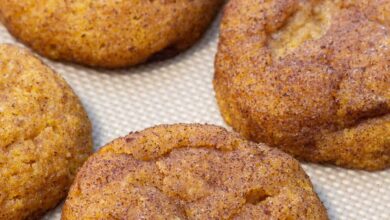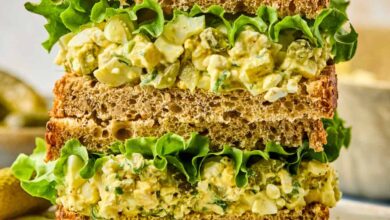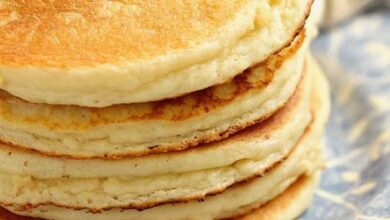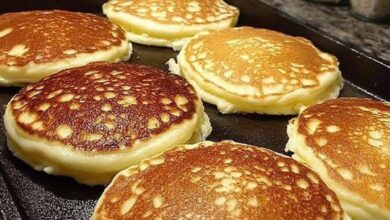Sourdough Ciabatta Bread Recipe
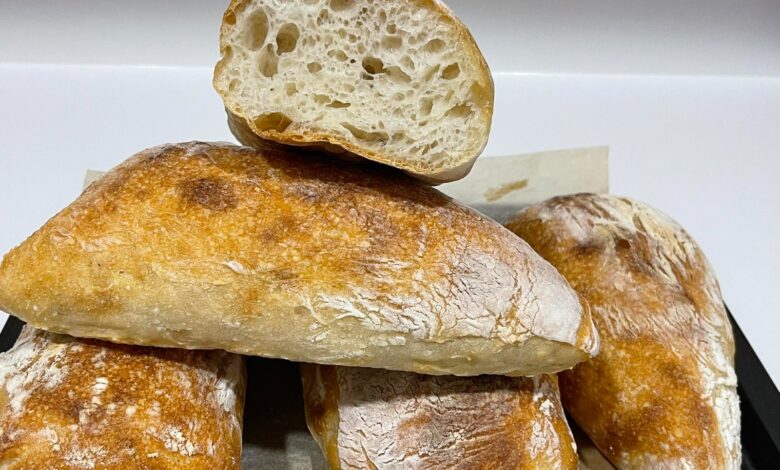
Introduction
There’s something magical about the aroma of freshly baked sourdough ciabatta filling the kitchen. With its crispy crust, soft and airy interior, and signature tangy flavor, this bread is perfect for sandwiches, dipping in olive oil, or simply enjoying warm with butter.
Unlike traditional ciabatta that uses commercial yeast, this version relies on an active sourdough starter to create natural leavening and a deeper, more complex flavor. The process takes time, but the results are worth every minute — a rustic, artisan loaf with character and chew.
Whether you’re an experienced sourdough baker or just beginning your bread-making journey, this recipe is simple, approachable, and incredibly rewarding. You’ll learn how to achieve that classic open crumb and crisp golden crust right from your home oven.
Cooking Time & Servings
- Preparation Time: 30 minutes (active), 6–8 hours (fermentation & proofing)
- Baking Time: 25–30 minutes
- Total Time: 7–9 hours (including resting and fermentation)
- Servings: Makes 2 medium loaves or 6–8 servings
🥖
Sourdough Ciabatta Bread Recipe
Ingredients
For the Dough:
- 500g (4 cups) bread flour
- 100g (½ cup) active sourdough starter (100% hydration)
- 375ml (1½ cups + 1 tbsp) warm water
- 10g (2 tsp) fine sea salt
- 15ml (1 tbsp) olive oil (optional, for extra softness)
For Dusting:
- Extra flour or semolina, for shaping and dusting
🍞
How to Make Sourdough Ciabatta Bread
Step 1: Mix the Dough
- In a large bowl, combine sourdough starter and warm water. Stir until dissolved.
- Add bread flour and mix with your hand or a dough whisk until no dry spots remain.
- Cover and rest for 30 minutes (autolyse phase).
Step 2: Add Salt and Stretch
- Sprinkle salt (and olive oil, if using) over the dough.
- Gently fold and stretch the dough in the bowl to incorporate the salt evenly.
- Cover again and let rest for 30 minutes.
Step 3: Bulk Fermentation
- Over the next 3–4 hours, perform 3–4 sets of stretch and folds every 30 minutes to build gluten strength.
- After the final fold, cover and let the dough rise until doubled and bubbly.
Step 4: Shape the Ciabatta
- Generously flour your work surface and gently tip the dough out (do not punch down).
- Divide into two equal rectangles using a dough scraper.
- Handle the dough lightly to preserve the air pockets — shape into rough rectangles or “slippers.”
- Place each loaf on parchment paper dusted with flour or semolina.
Step 5: Final Proof
- Cover with a damp towel and let rise for 1–2 hours, or until slightly puffy.
Step 6: Bake
- Preheat oven to 475°F (245°C) with a baking stone or steel inside.
- Transfer the ciabatta (with parchment) onto the hot stone.
- Steam the oven by adding a cup of hot water to a tray at the bottom.
- Bake for 25–30 minutes, until golden brown and crisp.
- Cool on a wire rack before slicing.
📝
Notes
- Starter Activity: Make sure your sourdough starter is bubbly and active before starting.
- Hydration: Ciabatta dough is wet and sticky — that’s normal! Use a bench scraper to handle it.
- Flavor Boost: A long, cold fermentation (in the fridge overnight) will deepen the sour flavor.
- Storage: Store in a bread bag or airtight container for up to 2 days. Freeze for up to 1 month.
❓
FAQs
Q1: Can I make this without a sourdough starter?
A: You can substitute the starter with 1 tsp instant yeast and reduce the fermentation time, but it won’t have the same flavor.
Q2: My dough is too sticky — is that normal?
A: Yes! Ciabatta dough has high hydration. Lightly flour your hands and surface, but avoid adding too much extra flour.
Q3: How do I get bigger air holes in my ciabatta?
A: Handle the dough gently during shaping and allow for a proper long fermentation. Don’t overwork it.
Q4: Can I bake this in a Dutch oven?
A: Yes, but ciabatta’s flat shape means it’s better on a baking stone or sheet for that classic look.
🧾
Nutrition Information (Per Serving)
| Nutrient | Amount (per serving) |
| Calories | 210 kcal |
| Carbohydrates | 42 g |
| Protein | 7 g |
| Fat | 2 g |
| Fiber | 2 g |
| Sodium | 390 mg |
| Sugar | 0.5 g |
